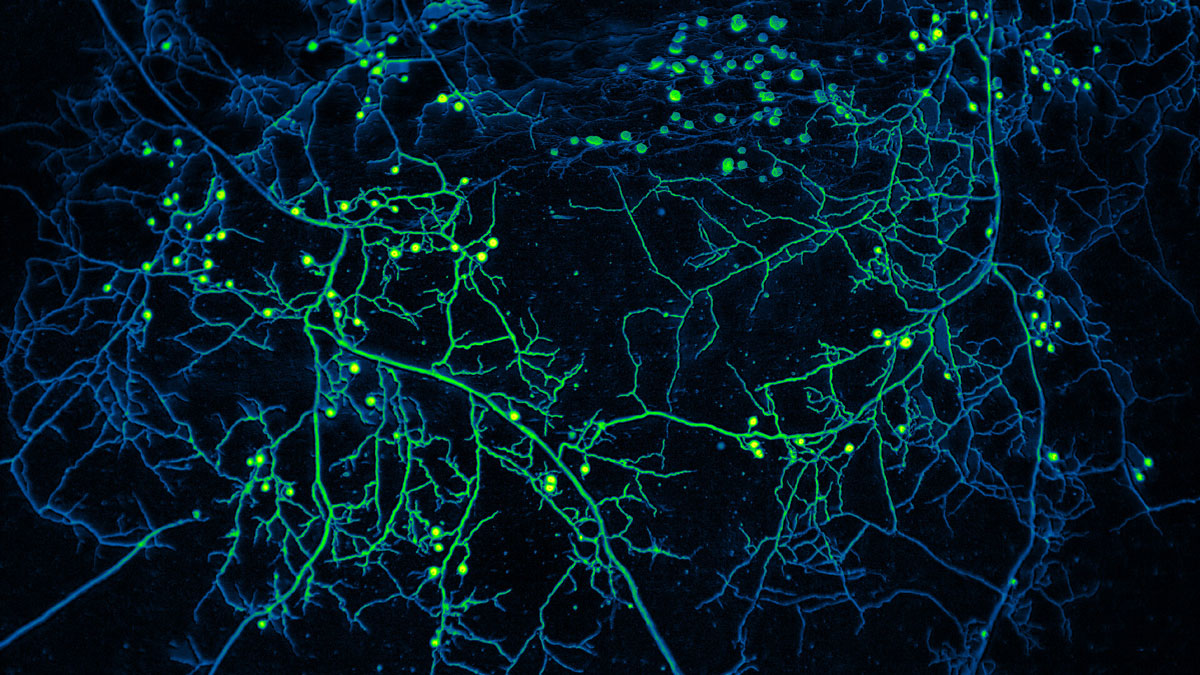Source: Journal of Geophysical Research: Biogeosciences
Just as the human body contains a multitude of symbiotic microbial companions, most plant species also live alongside microbial friends. Among these companions are mycorrhizal fungi, which help plants gather water and nutrients—particularly nitrogen—from the soil. In exchange, plants provide mycorrhizal fungi with an average of 3% to 13% of the carbon they pull from the atmosphere through photosynthesis and sometimes as much as 50%.
This carbon donation to support mycorrhizal fungi can incur a significant carbon cost for plants. But few groups have investigated how environmental factors such as soil temperature and nitrogen levels influence the amount of carbon flowing from plants to mycorrhizal fungi and how this flow is likely to shift with climate change. To fill this gap, Shao et al. derived a model that they call Myco-CORPSE (Mycorrhizal Carbon, Organisms, Rhizosphere, and Protection in the Soil Environment) that illustrates how the environment influences interactions between plants and mycorrhizal fungi.
When the researchers fed data from more than 1,800 forest sites in the eastern United States into Myco-CORPSE, they obtained some familiar results and also made some new discoveries. The model echoed previous work in suggesting that increasing the abundance of soil nitrogen, for example, through fertilizer runoff, decreases the dependence of plants on mycorrhizal fungi and therefore reduces the amount of carbon plants allocate to their microbial counterparts. But in contrast to previous studies, these researchers found that rising soil temperatures had the same effect of reducing the amount of nitrogen and carbon exchanged by fungi and plants. That’s because warmth accelerates the breakdown of organic material, which releases nitrogen. Increasing atmospheric carbon dioxide levels, on the other hand, will likely increase the reliance of plants on mycorrhizal fungi by increasing the growth rate of plants and therefore increasing their need for nutrients.
The Myco-CORPSE model also replicated observed patterns, showing that the two major kinds of mycorrhizal fungal species (arbuscular and ectomycorrhizal) behave differently: Arbuscular trees tend to donate less carbon to their associated fungi relative to how much ectomycorrhizal trees donate to theirs. The model also found that forests with a mix of both kinds of species typically accrue less carbon from plants than forests with less mycorrhizal diversity.
As forest managers navigate the many stresses that forests face today, promoting a diversity of mycorrhizal species within forests could optimize plant growth while minimizing the carbon diverted to mycorrhizal fungi, the researchers wrote. (Journal of Geophysical Research: Biogeosciences, https://doi.org/10.1029/2025JG009198, 2025)
This article is part of the special collection Biogeosciences Leaders of Tomorrow: JGR: Biogeosciences Special Collection on Emerging Scientists.
—Saima May Sidik (@saimamay.bsky.social), Science Writer


